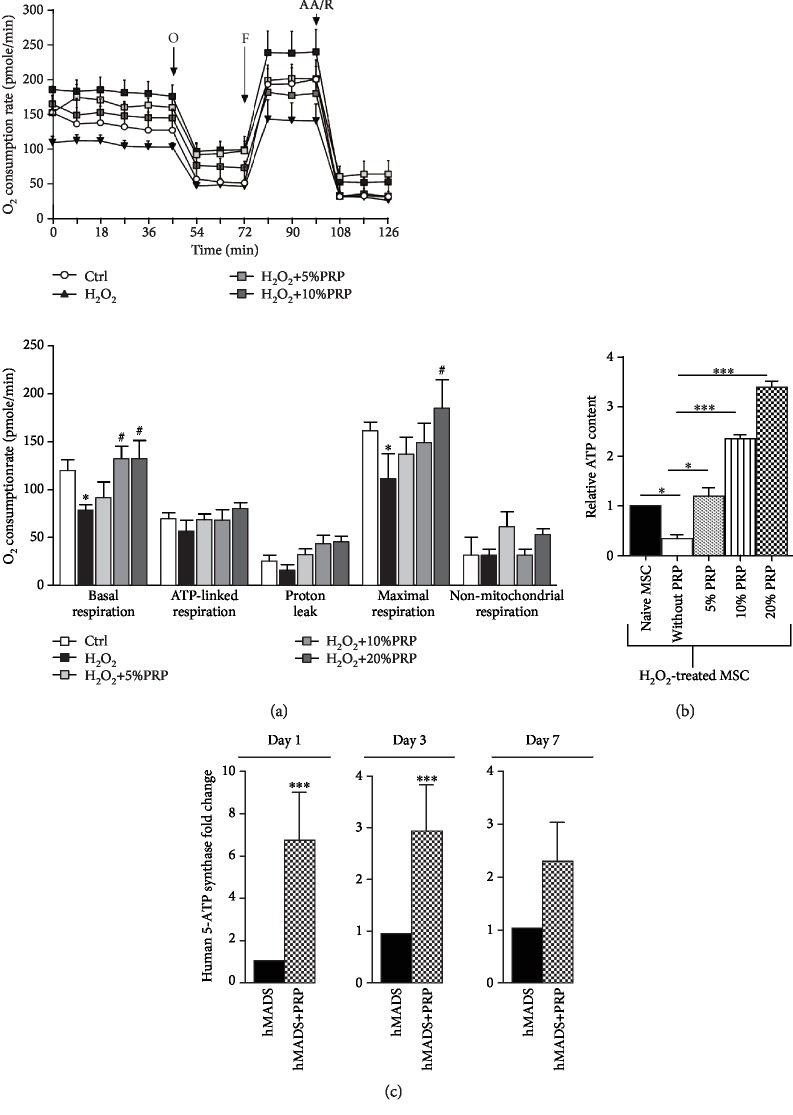Figure 5.
Effects of PRP on the energetic metabolism of hMADS cells. (a) Upper panel: representative graph showing oxygen consumption rate (OCR) measured by Seahorse XF analyser in hMADS cells in the absence or following a 24-hour treatment with 5%, 10%, or 20% PRP. A MitoStress assay was performed with a sequential addition of ATP synthase inhibitor oligomycin, electron chain uncoupler FCCP, and complex I and III inhibitors rotenone and antimycin A (R/AA). (b) Lower panel: mitochondrial respiration parameters including basal mitochondrial respiration (basal OCR measurement minus rotenone/antimycin A response) (basal), ATP-linked respiration (basal OCR measurement minus oligomycin response), proton leak (oligomycin response minus rotenone/antimycin A response), maximal respiration (FCCP response minus rotenone/antimycin A response), and nonmitochondrial respiration (rotenone/antimycin A response). Results obtained from n = 5 independent experiments are expressed as mean ± SEM; #p < 0.05. (b) Relative ATP content of H2O2-injured hMADS cells in the absence (without PRP) or following treatment with 5%, 10%, or 20% PRP by reference to noninjured naïve hMADS cells. Data represent the mean ± SD of n = 5 independent experiments. ∗p < 0.05, ∗∗∗p < 0.001. (c) Relative human 5-ATP synthase transcriptional expression in mouse wounds corresponding to the expression of hMADS cells engrafted in combination with PRP by reference to the expression of hMADS cells engrafted alone, at day 1, day 3, and day 7 postinjury. Data represent the mean ± SD from n = 6 mice. ∗∗∗p < 0.001.

